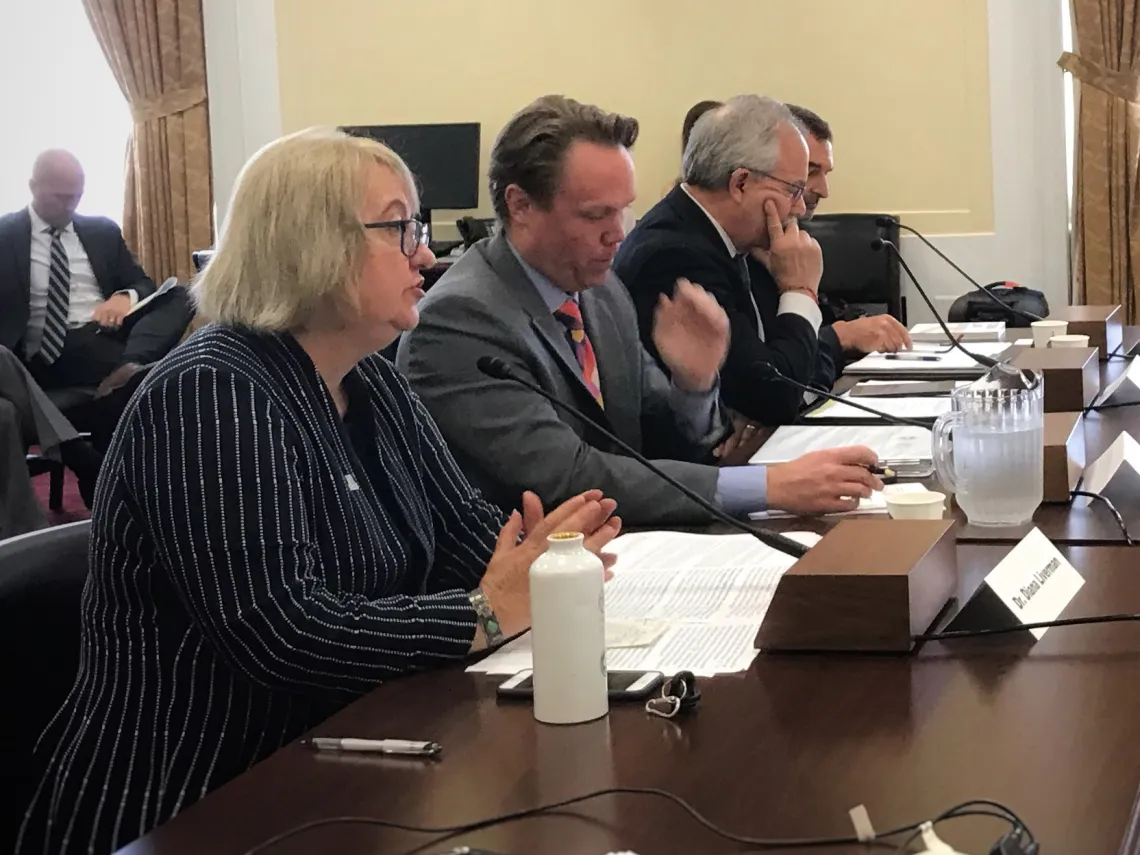UA Geographer Diana Liverman Testifies Before House Climate Committee
Liverman outlined the impacts of global warming to the Southwest United States and emphasized the urgency of reducing emissions if we wish to limit warming.

University of Arizona geographer Diana Liverman testified on April 30, 2019, before the House Select Committee on the Climate Crisis.
Photo credit: Julia Smith, UA Government & Community Relations
On April 30, University of Arizona geographer Diana Liverman testified before the House Select Committee on the Climate Crisis at the hearing “Solving the Climate Crisis: Drawing Down Carbon and Building Up the American Economy.”
A video of the hearing, along with a copy of Liverman’s testimony, can be found at the Committee for Climate Crisis website.
The hearing was the first of several that will focus on adopting climate policy that dramatically reduces carbon pollution to net-zero by mid-century.
Liverman, a UA Regents’ Professor in the School of Geography and Development in the College of Social and Behavioral Sciences, served as a lead author for the Intergovernmental Panel on Climate Change's special report on limiting warming to 1.5 degrees Celsius, and she’s advised numerous government committees, NGOs and businesses on climate change. Her research focuses on how climate change affects people, including historically disempowered groups, and how society can adapt to climate change.
In her testimony, Liverman discussed the impact of global warming and the differences between 1.5 C and 2 C warming on ecosystems, sea levels, and poverty, as detailed in the IPCC report. “Every bit of warming matters,” Liverman said.
Liverman also discussed the local impacts of global warming.
“Tucson, where I live, now has 25 more days above 100 degrees Fahrenheit than it did in 1970,” Liverman said. “Climate change is affecting our most vulnerable or historically disadvantaged citizens – the poor, the elderly, and children, tribal members, farm and construction workers who labor outside – who cannot escape the heat or afford the increased air conditioning and water costs.”
Liverman emphasized that limiting warming to 1.5 C will be hard, but possible. Cutting emissions in half by 2030 can be achieved through “an ambitious and exciting portfolio” that includes investing in renewables, reducing dependence on fossil fuels, and supporting forestry and land uses that sequester carbon.
Liverman also said it is possible to effectively link reducing emissions to adapting to warming, such as creating buildings designed for both lower emissions and adapting to higher temperatures, and forestry and farming for carbon sequestration and water conservation.
Liverman, wearing a UA pin, noted the UA’s contribution to a variety of important climate assessments, as well as its ongoing efforts to provide solutions. Liverman, along with five other UA professors, recently contributed to the fourth U.S. National Climate Assessment (NCA).
“The University of Arizona is working with water managers, conservation scientists, famers, and communities to develop and implement solutions that adapt to climate change,” Liverman said.
The best chance of limiting climate change to 1.5 C requires dramatic action now, Liverman said.
“If we choose to delay the emission reductions, we may lose the chance to stay under 1.5 C, or we will have to make deeper and more expensive cuts in emissions, rely on untested technologies, experience greater losses, or adapt to higher temperatures.”
The other experts who testified at the hearing were Hal Harvey, the CEO of Energy Innovation; David Foster, distinguished associate with the Energy Futures Initiative; and Christopher Guith, acting president and CEO of the U.S. Chamber of Commerce’s Global Energy Institute.

